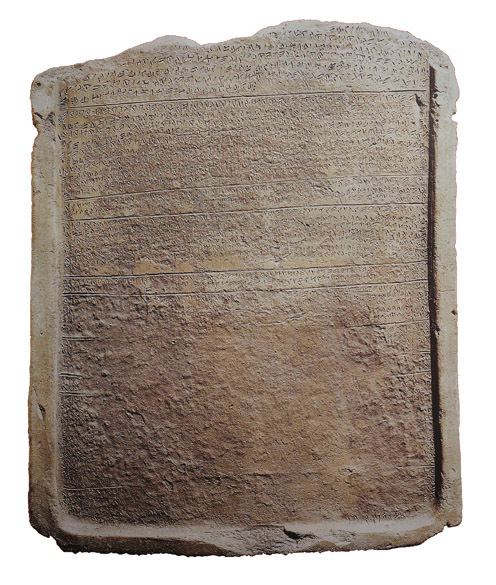 | ||
Tabula capuana
The Tabula Capuana (Tegola di Capua), is an ancient clay tablet, now in Berlin. It constitutes the second most extensive surviving Etruscan text, after the linen book the (Liber Linteus) used in ancient Egypt for mummy wrappings, now at Zagreb. (The third longest Etruscan inscription now being the cast bronze inscription found at Cortona in 1992, the Tabula Cortonensis.)
The Tabula Capuana (Tablet from Capua) is a terracotta slab, 60 by 50 centimeters, with a long inscribed text, apparently a ritual calendar, of which about 390 words are legible.
Horizontal scribed lines divide the text into ten sections. The writing is most similar to that used in Campania in the mid 5th century BC, though surely the text being transcribed is much older. It is an archaic ten-month year beginning in March (Etruscan Velxitna).
Attempts at deciphering the text (Mauro Cristofani, 1995) are most generally based on the supposition that it prescribes certain rites on certain days of the year at certain places for certain deities. The text itself was edited by Francesco Roncalli, in Scrivere etrusco 1985.
The tablet was uncovered in 1898 in the burial ground of Santa Maria Capua Vetere.
